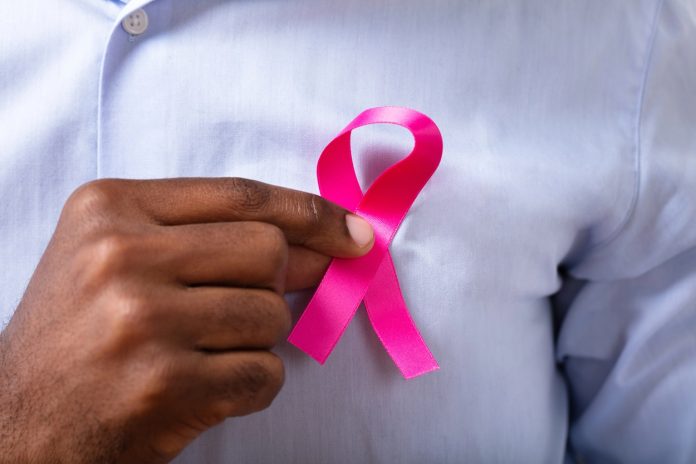
When people think of breast cancer, it’s usually seen as a women’s health issue. While this non-communicable disease accounts for less than 1% of all breast cancer cases, male breast cancer is a reality. It often goes overlooked, leading to delayed diagnoses and poorer outcomes. Raising awareness about male breast cancer is important, as early detection can significantly improve survival rates. Understanding the symptoms, risk factors and the social stigma surrounding the disease is key to encouraging more men to seek timely medical attention.
Understanding Male Breast Cancer
Breast cancer in men develops in the small amount of breast tissue they have. Just like in women, the cancer begins when abnormal cells grow uncontrollably and form a tumor. The most common type of breast cancer found in men is invasive ductal carcinoma, where cancer cells start in the ducts and spread to nearby tissue.
Men typically develop breast cancer between the ages of 60 and 70, but it can occur at younger ages. Risk factors include a family history of breast cancer, especially if they carry BRCA1 or BRCA2 gene mutations (which can be tested for), exposure to radiation, high levels of estrogen, and conditions like Klinefelter syndrome, a genetic occurrence of a male having an extra X chromosome. Obesity, liver disease and excessive alcohol consumption are also linked to an increased risk. Awareness of these risk factors can help men better understand their chances of developing the disease.
Symptoms to Look For
The symptoms of breast cancer in men are similar to those experienced by women. One of the earliest signs is a lump or thickening in the breast tissue, which is usually painless. Other symptoms include nipple inversion, skin changes, such as redness or scaling, and swelling or pain in the breast area.
Because breast cancer is not typically associated with men, many overlook or ignore these symptoms. They may dismiss a lump, think of it as a small injury, or believe that breast cancer only happens to women, leading to delayed diagnoses. In many cases, men don’t seek medical advice until the cancer has advanced, making treatment more complicated and less effective. As is the case for women, awareness of these symptoms and the importance of seeking medical attention early can save lives.
Diagnosis and Treatment
Diagnosing breast cancer in men involves similar procedures used for women, including physical exams, mammograms, ultrasounds and biopsies. Once diagnosed, the cancer is typically classified by its stage, ranging from localized to more advanced stages where the cancer has spread to other parts of the body.
Treatment for male breast cancer also mirrors that of female breast cancer and can include surgery, radiation therapy, chemotherapy and targeted therapies. In most cases, a mastectomy is performed to remove the tumor and surrounding breast tissue. Hormonal therapy may be used in cases where the cancer cells are hormone receptor-positive, meaning they grow in response to estrogen or progesterone.
The Impact of Social Stigma
One of the biggest barriers to early diagnosis and treatment of breast cancer in men is the social stigma surrounding it. Men may feel embarrassed or uncomfortable discussing it, believing that breast cancer is a “woman’s disease.” This misconception can prevent them from seeking help at the earliest signs.
Additionally, there can be a sense of isolation for men who are diagnosed with breast cancer. Support groups and resources are often geared toward women, leaving male patients feeling left out, unsupported, or like they need to keep it a secret from friends and family. This lack of awareness and available resources can contribute to the psychological burden of having breast cancer as a man, and subsequently, having to deal with it alone.
The stigma can also affect public health messaging, as most breast cancer awareness campaigns are aimed at women. This lack of representation can make it harder for men to recognize their own risk and understand the importance of self-examination and early detection.
Survival Rates and Statistics
While male breast cancer is rare, its outcomes can be severe due to delayed diagnoses. According to the American Cancer Society, about 2,700 men are diagnosed with breast cancer in the United States each year, and approximately 530 die from the disease annually. These numbers may seem small compared to the more than 250,000 women diagnosed each year, but they highlight the seriousness of the disease for men.
Survival rates for male breast cancer are lower than for women, largely because men tend to be diagnosed at a later stage when the cancer has already spread. However, if detected early, the five-year survival rate for men with localized breast cancer is about 97%. This underscores the importance of raising awareness and promoting early detection.
By breaking down the stigma, encouraging men to seek medical advice for any unusual symptoms, and providing more support tailored to male patients, we can improve the outlook for men diagnosed with breast cancer. Early detection saves lives, regardless of gender.
































